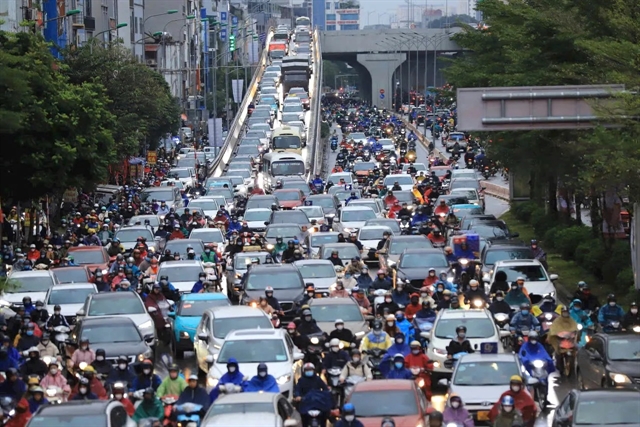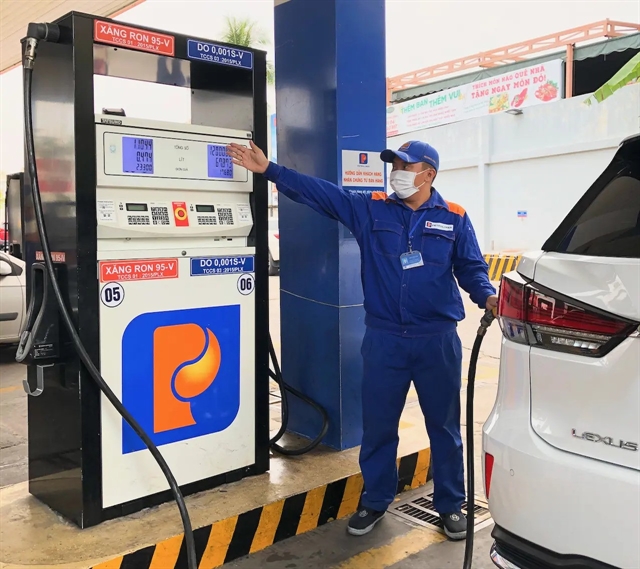According to experts, one of the biggest obstacles lies in the fuel supply chain. The roadmap for Level 5 compliance demands high-quality fuel that is currently scarce in many parts of the country.

HÀ NỘI — A new draft regulation on national car emissions standards introduced by the Ministry of Agriculture and Environment (MAE) underscores the Vietnamese Government’s commitment to reducing carbon pollution and achieving net zero emissions by 2050.
However, the proposal is raising concerns across the automotive industry due to potential challenges in implementation.
Under the draft, vehicles produced before 1999 will be subject to the lowest level of inspection standards, Level 1, while those manufactured from 1999 onwards will be assessed to a higher standard. Vehicles with spark ignition and compression ignition engines produced in 2017 and later will be required to meet the still-more-stringent Level 3 standards starting next year.
Beginning January 1, 2026, cars manufactured from 2022 must comply with Level 4 emissions standards. In Hà Nội and HCM City, the benchmark will rise to Level 5 by January 1, 2027, with the rest of the country following suit in 2028.
Industry insiders highlighted that one of the key concerns in the emission standards roadmap is the actual capacity of vehicles currently in circulation to comply. Despite the roadmap categorising standards by year of manufacture, many newly produced vehicles are still falling short.
Trần Đông Phong, a representative from Vietnam Register, said that even vehicles manufactured as recently as 2022, with only two to three years of use, have failed to meet Level 5 emissions standards during inspection. According to Phong, factors such as harsh driving conditions, inadequate maintenance and the widespread use of low-quality or incompatible fuel are contributing to this shortfall.
At the same time, industry insiders have also raised other concerns about enforcement of Level 5 standards by 2030, stating that the requirement could force many relatively new vehicles off the roads unnecessarily.
Many of these vehicles — manufactured just a few years ago and compliant with Level 4 standards — still meet essential emissions criteria. It would be a significant waste to eliminate vehicles that are still environmentally sound, experts argued.
They added that some vehicles built before 2017, if well-maintained and with low mileage, can outperform poorly maintained newer vehicles in emissions performance.
A major worry is the potential impact on commercial transport. If the regulation is applied uniformly starting in 2030 without careful classification, a large number of heavy trucks and passenger vehicles may fail to meet Level 5 requirements. This could seriously disrupt logistics and economic activity, especially since these vehicles often experience faster engine wear due to their high usage intensity.
High-quality fuel needed

According to experts, one of the biggest obstacles lies in the fuel supply chain. The roadmap for Level 5 compliance demands high-quality fuel that is currently scarce in many parts of the country.
Although manufacturers have introduced Level 5-compliant vehicles to the market, access to suitable fuel remains a challenge. This not only affects engine durability, but also complicates the vehicle registration process, a representative from Mitsubishi Việt Nam told nhandan.vn.
Phong echoed these concerns, warning that substandard fuel severely compromises vehicle performance.
It can cause engines to degrade quickly, generate error alerts and even result in vehicles failing emissions inspections, Phong said.
Deputy Director of the MAE's Department of Environment Lê Hoài Nam said that emissions regulations must be aligned with fuel supply capabilities.
If emissions standards are enforced without a synchronised roadmap for clean fuel distribution, environmental goals will not be achieved, Nam said, adding that fuel standards must be treated as an essential input in managing emissions output.
Đỗ Minh Quân, Department of Domestic Market Development Management under the Ministry of Industry and Trade (MoIT), admitted that to fully cover the national market with Level 5 fuel, more time will be needed for preparation.
MoIT is taking the lead and coordinating with relevant agencies to ensure that the fuel supply on the market meets national standards and technical regulations.
Regarding the roadmap for applying biofuels, the ministry will also take the lead in developing a plan to supply appropriate raw materials, coordinating with relevant ministries and branches.
When a specific roadmap is available, petroleum enterprises will have time to build facilities and infrastructure to supply fuel, he said. — VNS





